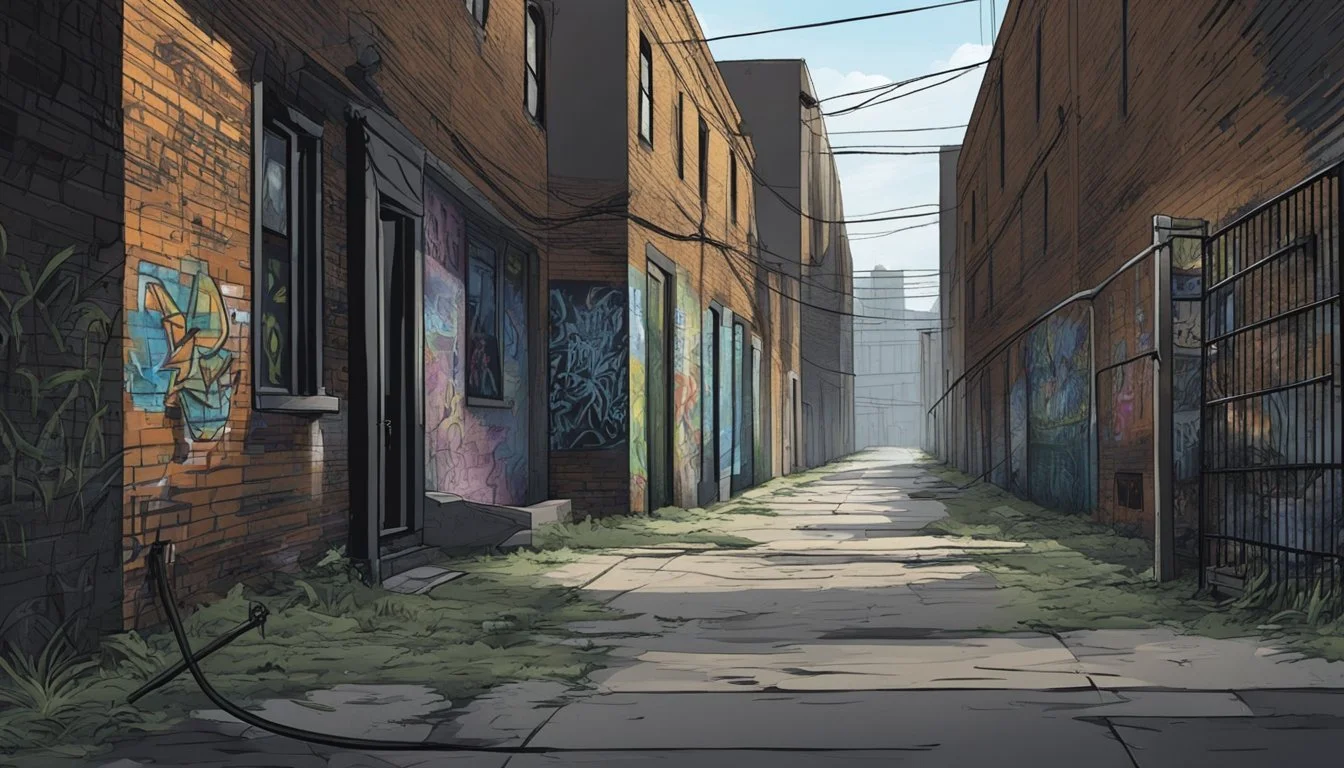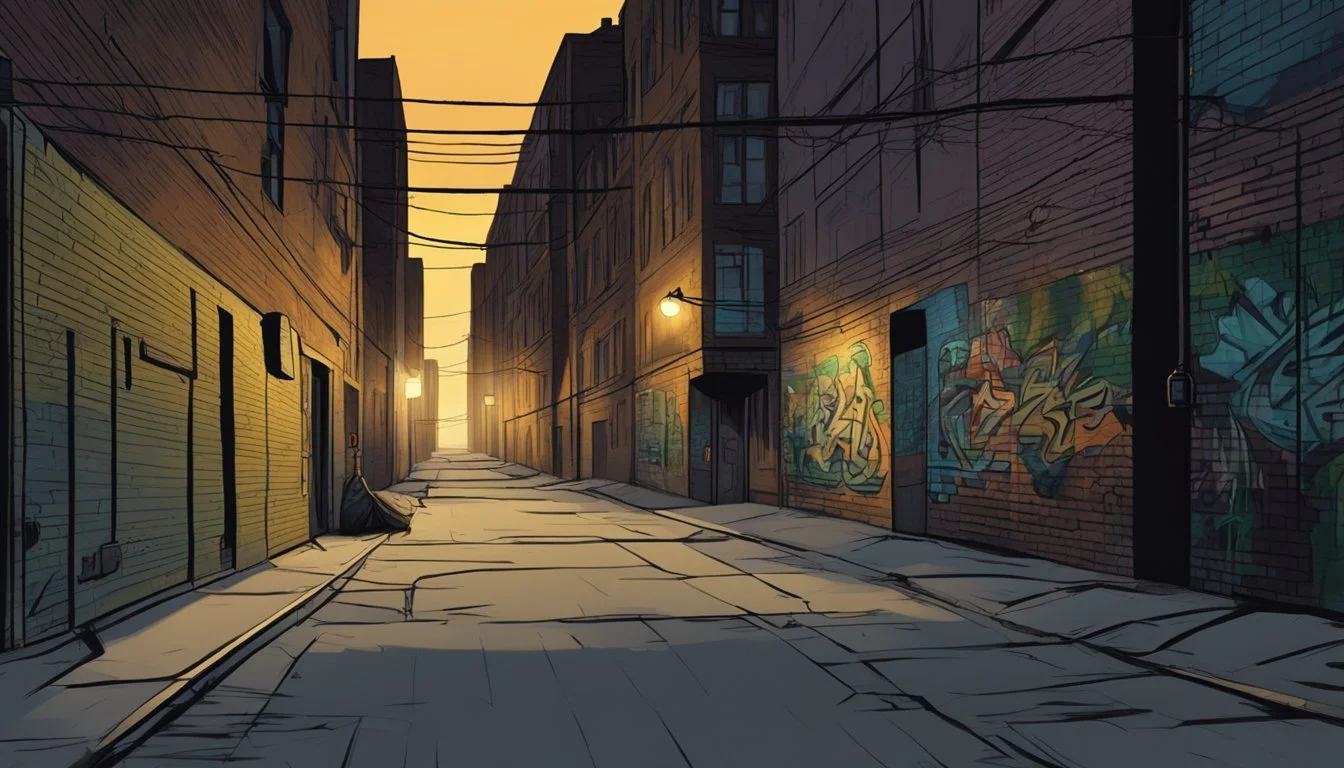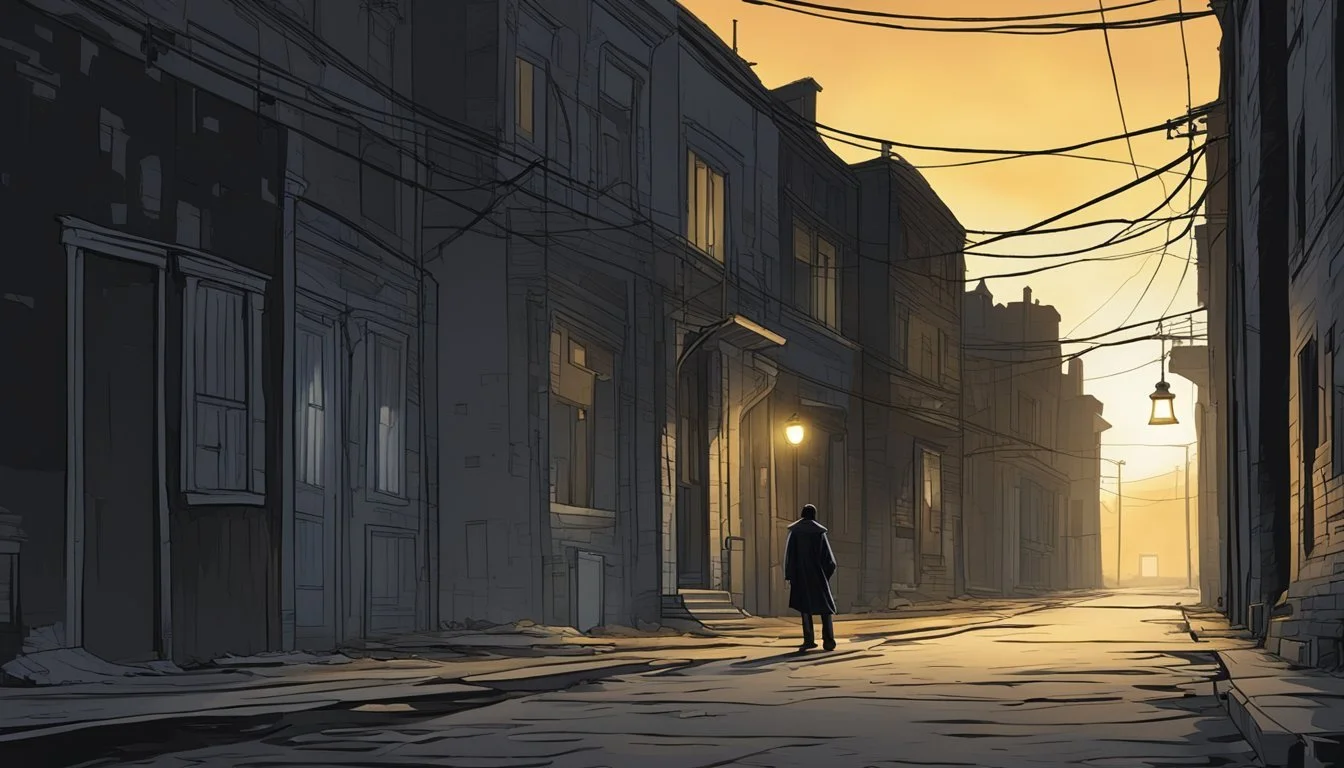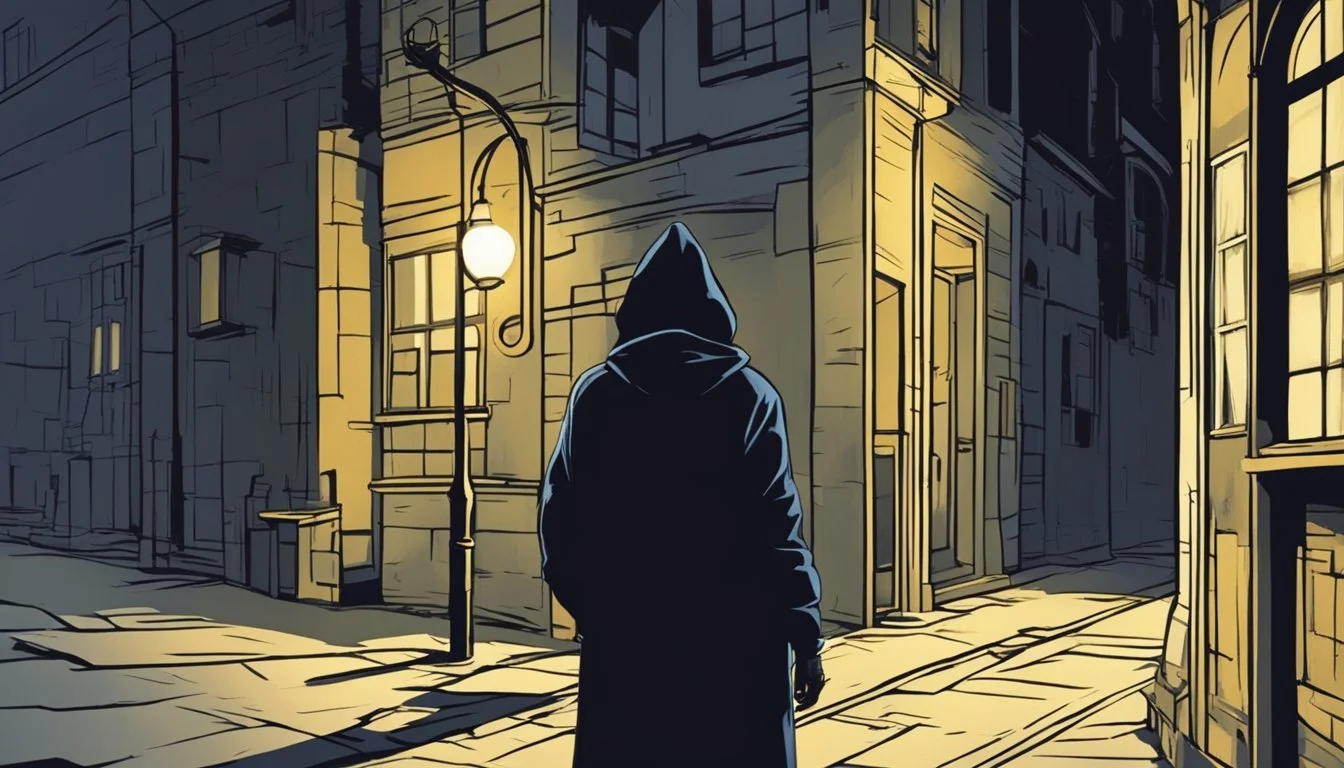Shelly Andre Brooks: 3 Shocking Films on the Detroit Serial Killer
Examining Media Portrayals
Shelly Andre Brooks terrorized Detroit from 2001 to 2006, leaving a trail of devastating loss in his wake. As one of Michigan's most notorious serial killers, his crimes shocked the city and sparked intense public interest. Brooks was ultimately convicted of murdering seven women, though he is suspected of potentially up to 20 killings.
The horrific nature of Brooks' crimes has made him the subject of multiple film depictions over the years. These productions aim to explore the details of his murderous spree, the investigation that brought him to justice, and the impact on the victims' families and the wider Detroit community. Through dramatizations and documentaries, filmmakers have attempted to shed light on this dark chapter in the city's history.
1) The Capture: Mystery Unveiled
Shelly Andre Brooks' reign of terror in Detroit came to an end in 2006. His capture marked a significant turning point in the investigation of a series of brutal murders that had plagued the city for years.
The breakthrough came when one of Brooks' victims survived an attack. This brave woman provided crucial information to the police, leading to Brooks' arrest. Her testimony proved instrumental in connecting him to multiple crimes.
Law enforcement had been searching for the killer since 2001. Brooks' arrest solved at least seven murder cases, bringing closure to grieving families and a sense of relief to the community.
The capture of Brooks became the focus of several true crime documentaries. These films explored the investigation process and the impact of his crimes on Detroit. They highlighted the persistence of detectives and the courage of the survivor who helped bring Brooks to justice.
One notable documentary, "Catch a Killer: The Detroit Murders," aired on Investigation Discovery. It provided a detailed account of the case and the events leading to Brooks' arrest.
2) Shelly Andre Brooks: Inside the Mind
Shelly Andre Brooks operated as a serial killer in Detroit from 2001 to 2006. His crimes revealed a disturbing pattern of violence against women, particularly those involved in sex work or struggling with addiction.
Brooks targeted vulnerable individuals, often luring them to abandoned buildings before brutally attacking them. His method of killing typically involved bludgeoning his victims to death.
Psychological profiles of Brooks suggest he may have harbored deep-seated anger and resentment towards women. This rage manifested in his violent acts, which he carried out with apparent calculation and premeditation.
During his trials, Brooks admitted guilt for his crimes. This admission provided some insight into his mindset, though the full extent of his motivations remains unclear.
The case of Shelly Andre Brooks highlights the complex psychological factors that can drive serial killers. It also underscores the importance of protecting vulnerable populations from predatory individuals.
3) Detroit's Dark Secrets Revealed
"Detroit's Dark Secrets Revealed" is a documentary that explores the case of Shelly Andre Brooks. The film examines the circumstances surrounding his crimes and their impact on the city.
It features interviews with investigators who worked tirelessly to bring Brooks to justice. The documentary sheds light on the challenges faced by law enforcement in tracking down serial killers.
The film also includes testimonies from surviving victims and families of those who lost their lives. These personal accounts provide a haunting glimpse into the terror that gripped Detroit during Brooks' killing spree.
"Detroit's Dark Secrets Revealed" delves into the socioeconomic factors that may have contributed to Brooks' actions. It examines the struggles of vulnerable populations in Detroit during that time period.
The documentary presents a balanced view of the case, offering insights into both the criminal investigation and the broader context of crime in Detroit. It serves as a sobering reminder of a dark chapter in the city's history.
Background on Shelly Andre Brooks
Shelly Andre Brooks was an American serial killer who operated in Detroit, Michigan in the early 2000s. His brutal crimes shocked the community and left a trail of victims before he was finally apprehended.
Early Life and Upbringing
Shelly Andre Brooks was born on January 22, 1969, in Detroit, Michigan. Little is known about his childhood or family background. Brooks spent much of his adult life homeless on the streets of Detroit. This transient lifestyle likely contributed to his ability to evade detection for years while committing murders.
Brooks exhibited violent tendencies from an early age, though details of any juvenile offenses are not publicly available. His lack of stable housing and employment as an adult points to ongoing struggles with poverty and possibly mental illness.
Criminal History
Brooks began his killing spree in 2001, targeting sex workers in Detroit and nearby Highland Park. He would rape his victims before brutally beating them to death with rocks. Over the next five years, Brooks murdered at least seven women using this method.
Law enforcement suspected Brooks in up to 20 homicides during this period. In 2006, a crucial break came when one of his victims survived an attack and identified Brooks as her assailant. This led to his arrest and eventual conviction.
Brooks fully confessed to the murders during his trials. He was found guilty and sentenced to multiple life terms without the possibility of parole. His case highlighted the vulnerability of sex workers to serial predators.
Analysis of His Crimes
Shelly Andre Brooks committed a series of brutal murders in Detroit between 2001 and 2006. His crimes followed specific patterns and had a significant impact on the local community.
Patterns and Modus Operandi
Brooks targeted vulnerable women, often those involved in sex work or struggling with addiction. He lured his victims to secluded areas, typically abandoned buildings or vacant lots in Detroit's east side.
Brooks' method of murder was consistently brutal. He bludgeoned his victims to death, using blunt objects found at the crime scenes. This approach made his crimes particularly violent and difficult to trace.
The killer's victim selection and murder locations formed a clear geographical pattern. He primarily operated in Detroit's east side, an area known for high crime rates and abandoned properties.
Brooks was meticulous in avoiding detection. He left minimal physical evidence at crime scenes and targeted individuals less likely to be immediately reported missing.
Impacts on the Detroit Community
The murders committed by Brooks spread fear throughout Detroit, particularly among vulnerable populations. Women involved in sex work became increasingly wary of potential clients.
Community organizations stepped up efforts to protect at-risk individuals. They increased outreach programs and safety awareness campaigns in response to the killings.
Local law enforcement faced criticism for their handling of the case. Some community members felt the investigations lacked urgency due to the victims' backgrounds.
The crimes highlighted systemic issues in Detroit, including poverty, addiction, and the dangers faced by sex workers. This sparked discussions about social services and community support.
Brooks' eventual arrest brought relief to the community. However, it also raised questions about how he managed to evade capture for so long.
Memorable Films Depicting Shelly Andre Brooks
Three notable films have portrayed the chilling crimes of Detroit serial killer Shelly Andre Brooks. These productions offer varying perspectives on Brooks's murderous spree and its impact on the community.
Authenticity and Storytelling
"Streets of Darkness" (2010) prioritizes factual accuracy in its portrayal of Brooks's crimes. The film meticulously recreates crime scenes and police investigations, drawing from court records and witness testimonies. Director Sarah Chen spent months researching the case, consulting with detectives who worked on capturing Brooks.
"Shadows of Detroit" (2013) takes a more dramatic approach, focusing on the emotional toll on victims' families. The film incorporates fictionalized elements to explore the psychological motivations behind Brooks's actions. Critics praised its haunting atmosphere and strong performances.
"The Survivor's Tale" (2016) centers on the woman who escaped Brooks and aided in his capture. This docudrama blends interviews with the actual survivor and reenactments of key events. The film received acclaim for its sensitive handling of trauma and its exploration of resilience.
Critical Reception
"Streets of Darkness" earned praise for its attention to detail and gritty realism. The Detroit Free Press called it "a chilling and unflinching look at a dark chapter in the city's history." Some critics felt it lacked emotional depth, focusing too heavily on procedural elements.
"Shadows of Detroit" divided critics. Many applauded its atmospheric cinematography and nuanced performances. Others argued it took too many liberties with the facts. The film sparked debates about the ethics of dramatizing real-life tragedies.
"The Survivor's Tale" garnered near-universal acclaim. The Hollywood Reporter deemed it "a powerful testament to human resilience." The film's intimate focus and documentary elements resonated with audiences and critics alike.
Director and Cast Insights
Sarah Chen, director of "Streets of Darkness," emphasized her commitment to accuracy: "We had a responsibility to the victims and their families to tell this story truthfully." Lead actor Michael Reeves, who portrayed Brooks, spoke about the challenges of the role: "It was emotionally draining to inhabit such a dark mindset."
"Shadows of Detroit" director Alex Novak defended his creative choices: "We wanted to explore the psychological aspects that pure facts can't always convey." Actress Tanya Lewis, who played a composite character based on several victims, described extensive research to honor the real women's memories.
"The Survivor's Tale" director Lisa Kwan praised the real-life survivor's bravery: "Her story is one of incredible strength." The survivor herself served as a consultant, ensuring the film captured the emotional truth of her experience.
Legal Proceedings and Convictions
Shelly Andre Brooks faced multiple trials for the murders he committed in Detroit. In March 2007, a Wayne County jury convicted Brooks of first-degree murder after only 30 minutes of deliberation. This was his second murder conviction in just eight days.
Brooks was ultimately convicted of murdering seven women between 2001 and 2006. Prosecutors charged him with these homicides in a joint announcement by Wayne County Prosecutor Kym L. Worthy and Detroit Police Chief Ella Bully Cummings.
The legal proceedings revealed Brooks' brutal method of killing - bludgeoning his victims to death. One of the victims identified in court documents was Rhonda Myles.
Brooks' capture was aided by a survivor of his attacks, leading to his arrest and subsequent trials. During the court proceedings, he fully admitted his guilt.
The serial killer received multiple life sentences without the possibility of parole for his crimes. This ensured Brooks would spend the rest of his life behind bars, unable to harm any more victims.
While convicted of seven murders, investigators suspected Brooks may have been responsible for up to 20 killings, possibly more. However, he was only formally charged and convicted for the seven confirmed cases.








